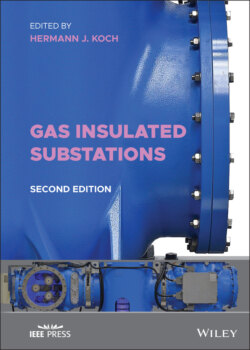Читать книгу Gas Insulated Substations - Группа авторов - Страница 51
1.3 Standards and References 1.3.1 Standards
ОглавлениеStandards are technical documents that allow the manufacturer to develop equipment to meet the majority of user applications, and users to specify equipment that meets their needs in most cases. There are always circumstances that fall outside typical cases covered by standards, but they are few. Although there are many national and regional standards, the primary standards that apply to GIS are the International Electro‐technical Commission (IEC) and the Institute of Electrical and Electronic Engineers (IEEE) standards. In recent years, great effort has been made to harmonize these standards. This effort continues, but differences between them remain. These reflect the differences in the nature of systems, applications, and practices between different parts of the world.
Gas‐insulated switchgear, components, and related equipment fall under a large number of standards. Both IEC and IEEE have standards for GIS, circuit breakers, switches, bushings, testing, instrument transformers, controls, cabinets, pressure vessels, and so on. The difference in the equipment built under the two sets of harmonized standards is small and an understanding of how the equipment is designed and tested can usually allow the user to specify equipment under either set of standards. Most manufacturers design the equipment to meet either set of standards, but often limits on testing capability or cost can leave some areas covered by one set of standards only. This requires review of the application requirements and the tested performance of the equipment to determine if it meets the requirements. There has been, and continues to be, efforts made in the standards community to harmonize the requirements between IEEE and IEC. For high‐voltage GIS, efforts on 62271‐203 (2020) and recently C37.122 (2021) have resulted in a high level of harmonization. Progress has also been made on high‐voltage circuit breaker standards, but here many differences remain. Still, by understanding the differences, a user can use either standard.
An example of differences between IEEE and IEC GIS standards is in North America, where safety requirements for maintenance personnel mandate a visible check to verify that the circuit is not energized before it can be approached for maintenance. This requires a view port or camera to verify the disconnect switch blade position. In other countries, safety requirements allow verification of the position of the disconnect switch linkage as confirmation that the switch is open, kinematic chain.
There are standards other than IEEE and IEC that cover requirements related to GIS, for example, the American Society of Mechanical Engineers (ASME), the American Society for Testing and Materials (ASTM), the European Committee for Electrotechnical Standardization (CENELEC), European Standards (EN), the National Electrical Manufacturers Association (NEMA), to name a few.
